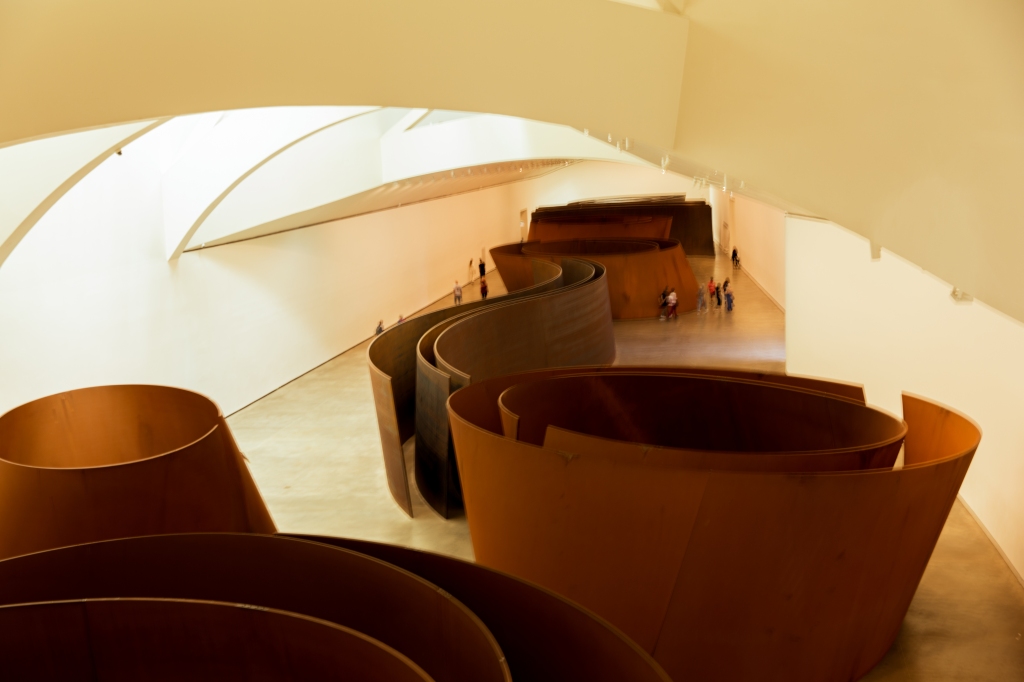It is well over 20 years since I last visited Bilbao. This bustling northern city of Spain, and the largest in the Basque Country, lies in an impressive location between two small mountains ranges and the sea. It is full of local character and boasts impressive museums and galleries. The Guggenheim Museum, which opened in 1997, is a spectacular work of art in itself with its distinctive curved and shinning exterior. Frank Gehry’s waterside masterpiece claims that very rare accolade of being praised equally by critics, academics and the general public.

Inside the Guggenheim are the vast and imposing creations of Richard Serra, who died earlier this year. When I was last in Bilbao some of the steel structures were in place, but not all. I can remember walking around the curved and towering sides of this massive installations and experiencing the dizzying effects of being inside these metal behemoths. Today, walking around and within the complete set of structures is an even more spectacular assault to the senses. Light, space and sound are distorted in ways that question our certainties and give the world back to us in unexpected ways. In a venue visited by tourists from all over the world, words from many different languages echo around the soaring sides of steel, creating a Babel-like atmosphere of mythic confusion. For Serra the whole experience was intended to shape our awareness of time as, walking around the pieces, our perception bounces between the unexpected and the slow unfolding of different spaces.
“The meaning of the installation will be activated and animated by the rhythm of the viewer’s movement. Meaning occurs only through continuous movement, through anticipation, observation and recollection”.
Richard Serra – about the installations entitled “A Matter of Time”
This is what art offers us at its best – the opportunity to move beyond what we assume and project. To begin to perceive different possibilities and opportunities. It is little wonder that so much of the status quo in politics and elsewhere operates to curtail investment in such projects. The narrow measures of cost and benefit have little scope for calculating the value of these artistic expressions. In the political manifestoes currently on offer in the UK neither of the main parties offer any detailed vision for public art or community creativity. As Richard Serra said on more than one occasion: “art is purposely useless…” – which is part of its magic for humanity, as well as the reason politicians are unlikely to spend very much time speaking about it.

